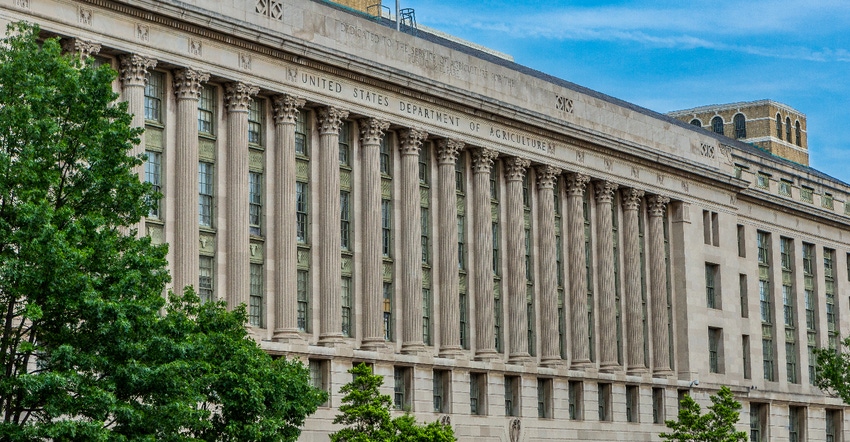
If there was ever a time that a Northeasterner would be considered for USDA secretary, now might be it.
President-elect Joe Biden — born in Pennsylvania and raised in Delaware — has a clear connection to the area. And he doesn’t have to look far for someone with prior experience to lead the USDA.
Delaware Secretary of Agriculture Michael Scuse served as deputy secretary of USDA in the Obama administration, and even served as acting ag secretary for a brief period before the Trump administration took office.
But another name that’s consistently come up for the top ag post is Russell Redding, Pennsylvania’s ag secretary. Redding says that he hasn’t been contacted about the job by the administration, although he was contacted by “a third party” about his views on what the administration’s ag priorities should be.
“I would certainly always entertain the conversation to be considered for USDA secretary, but it’s not, again, something that I’m out campaigning for,” he says.
In terms of ag priorities for the incoming administration, Redding says the department should put a bigger focus on the ag workforce, especially considering the issues at meatpacking plants in spring because of the COVID-19 pandemic.
He also says the administration should focus on stabilizing the farm economy, providing a “bridge to 2021” that will give farmers some stability while also ensuring the farm economy starts growing again next year.
Infrastructure should be another top priority, Redding says. Growing rural broadband, fixing bridges and roads that facilitate the movement of goods — and adding more meat processing capacity for smaller producers — should be prioritized.
Then there is the issue of the Chesapeake Bay cleanup. Redding says the state needs help to implement more ag practices on farms for the state to meet its nitrogen reduction goals as outlined in the Chesapeake Bay cleanup plan.
Penn State has estimated a total investment of $300 million a year for the state to meet its Watershed Implementation Goals with agriculture at the top of that list.
Redding says the state’s ag economy has been resilient even though some sectors, such as dairy, continue to struggle.
“I think the diversity of Pennsylvania agriculture is our strength," he says. "I'm so grateful that we have the fruits, direct marketing and dairy, and beef. All of that gives us confidence in the ability to mitigate some of these shocks. I want the administration to reflect American agriculture, and why not get someone from the Northeast?”
American Agriculturist reached out to several Northeast ag leaders to hear their thoughts on priorities the Biden administration should focus on when taking office:
Doug Fisher, New Jersey secretary of agriculture
One long-standing challenge has been the adherence in the dairy industry to the Federal Milk Marketing Order. This relic of the Depression Era that uses regional formulas for pricing, and milk movement hamstrings smaller, family-owned dairy farms and has resulted in only the largest, corporate-owned farms being able to compete in the marketplace. A top-to-bottom overhaul of this antique pricing method is absolutely needed.
Secondly, many states whose agricultural production is tied to produce and other items that must be hand-picked have faced for close to a decade difficulties in acquiring enough labor, especially in temperate areas like the Northeast, where high demands for labor must be met during the shorter harvest season.
While comprehensive immigration reform may help this situation, the vast need for agricultural guest workers to meet the growing food demands of the nation and world should prioritized and handled separately and immediately so that they do not get delayed in a larger political debate.
Third, this region relies heavily upon production of fruit, vegetable and other products that receive some support through the Specialty Crop Block Grants program in USDA. These funds are minuscule when compared to the funding provided the “big five” crops through long-standing subsidies.
With health experts increasingly urging people to eat more and more of the fruits, vegetables and other products that are eligible for SCBG funding, a greater commitment to the funds going into that program must be made, with an emphasis on getting more fresh produce into the regular dietary routine of underserved urban areas.
Fourth, meaningful trade reform must occur that includes no artificial barriers, so that farmers in New Jersey and elsewhere in the nation can escape a competitive disadvantage with foreign growers who will sell below cost in order to establish a presence in the U.S. marketplace.
Responding in a timely manner to complaints by U.S. farmers of such undercutting practices by foreign growers is vital to helping them maintain their hard-won markets.
Fifth, we must ensure that regions of the Northeast that are truly rural in character, but which may be parts of larger metropolitan units of the Census Bureau, have an equal playing field in seeking funds through USDA’s Rural Development program.
With so many varying definitions of “rural” already existing through USDA-RD programs, at least one should set hard population counts aside and instead focus on how much an applicant area reflects an agricultural base to its economy. This also would help make rural-to-urban agricultural products (such as farmers in a rural area providing raw materials to a food processor in a nearby urban area) more possible through the use of USDA-RD funding for those states without “traditionally rural” areas.
Sixth, reliable broadband communications and internet service must be expanded to all rural areas, including those that may face hurdles in the “rural” definition area mentioned before. Without reliable broadband internet and communication services, farms in these areas face challenges in both marketing on the internet and, more importantly, integrating internet-based, efficiency-improving methods, such as sensors to detect drought, disease or pest damage to their farm management toolbox.
Dena Leibman, executive director of Future Harvest CASA in Maryland
If USDA gleans any lessons from the pandemic, it would have to be that we need to shorten many of our supply chains and shift significant support to the small- and midscale farmers who quickly and nimbly pivoted their operations in order to feed their communities in the wake of the global supply shock.
USDA has long ignored this crucial sector with outsized support for large-scale, commodity agriculture, and a one-size-fits-all regulatory system. It's time to level the farming field so that local farmers cannot just survive, but thrive.
Steve Ammerman, spokesman for New York Farm Bureau
It is also important for the USDA secretary to have strong working relationship with his or her counterparts in the federal government:
• working with the Department of Labor on agriculture labor reform including both H2A workers and year-round workers.
• working with FDA on the standard identity of milk and correct labeling of dairy and nondairy products
• working with U.S. Trade Representative/Department of Commerce to ensure the promotion of New York and Northeast agriculture products around the world, as well ensuring that U.S. producers are not disadvantaged by agricultural imports into the U.S.
• working with the Department of Transportation on the movement of agricultural goods
Hannah Smith Brubaker, PASA executive director in Pennsylvania
• To ensure we can continue to feed people without further disruption to markets and distribution systems, we need a federal COVID-19 mandate — masking, socially distancing and up-to-the-minute science-based information. Highly diversified farms typically sell through multiple channels, and the hardest part of navigating all the changes has been the lack of a clear directive with a team-approach game plan.
• People need to get back to work. Some version of the Civilian Conservation Corps to rebuild our infrastructure in our natural spaces where people explore (parks and forests), as well as to help farmers install conservation practices that work well for their farm business and the environment could go a long way.
• Agriculture touches nearly every aspect of our lives. During COVID-19, many people with no connection to a farm began seeing the value in a relationship with their local farmer. It was the direct-to-consumer farms that were able to pivot and even thrive with a shifting marketplace.
Urban growers who are perhaps the most deeply entrenched in serving the needs of their local communities saw unprecedented demand and are often at the forefront of teaching people to grow food for themselves. We need a comprehensive immigration policy and ag policies, in general, that are in tune with the realities of today's farmers and growers and their needs.
• Now is the time to lift farmers up and celebrate the role they can play in combating climate change. With federal agriculture policies that support organic and other sustainable and regenerative farming practices, we can align farming with environmental patriotism. We must stop developing policies based on the false assumption that agriculture and the environment need be at odds.
In fact, pasture-based systems stand to sequester more CO2 than nearly any other agricultural practice. When we develop federal policies and programs that assume farmers want to be stewards, they'll answer the call.
About the Author(s)
You May Also Like






